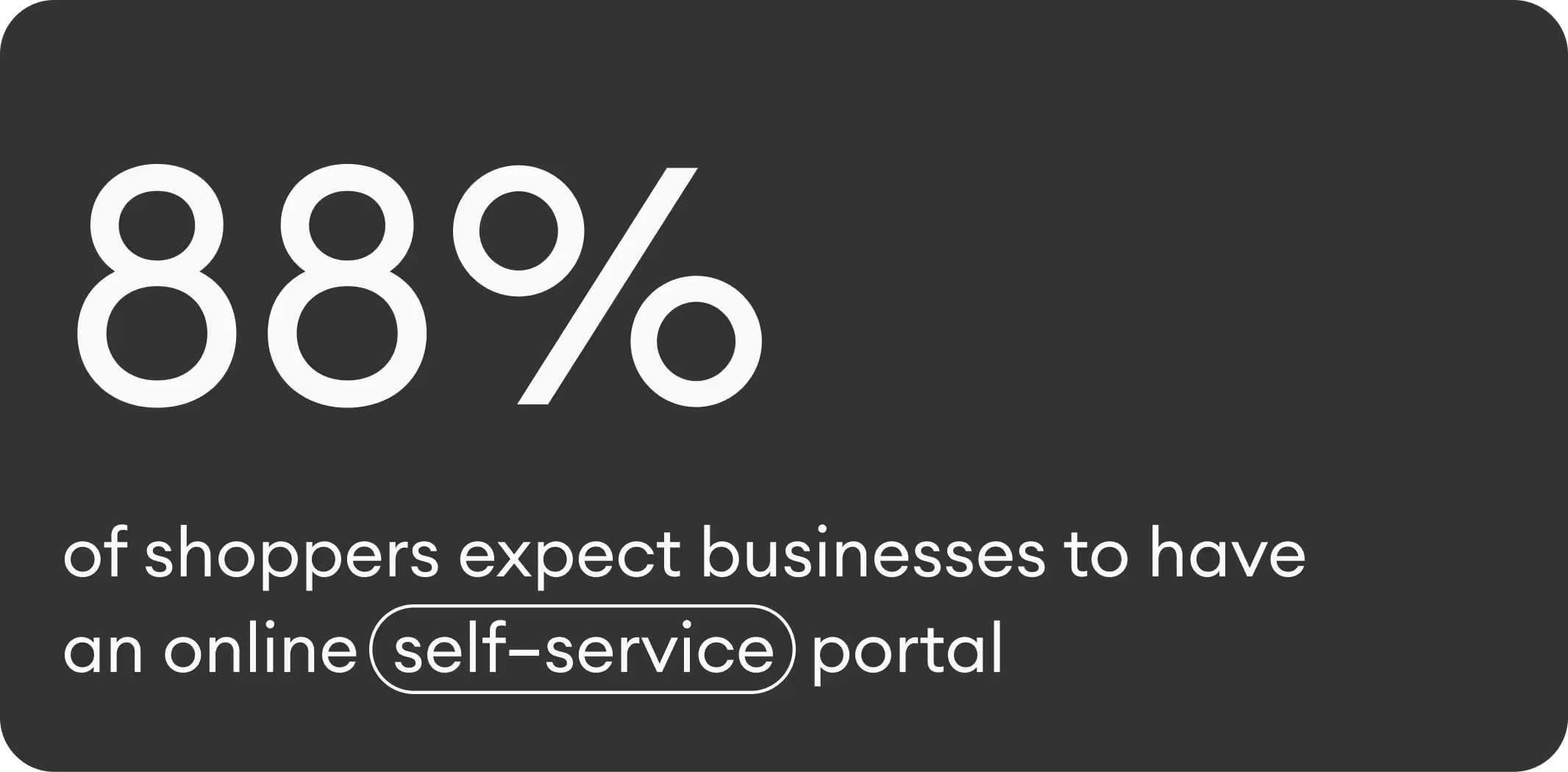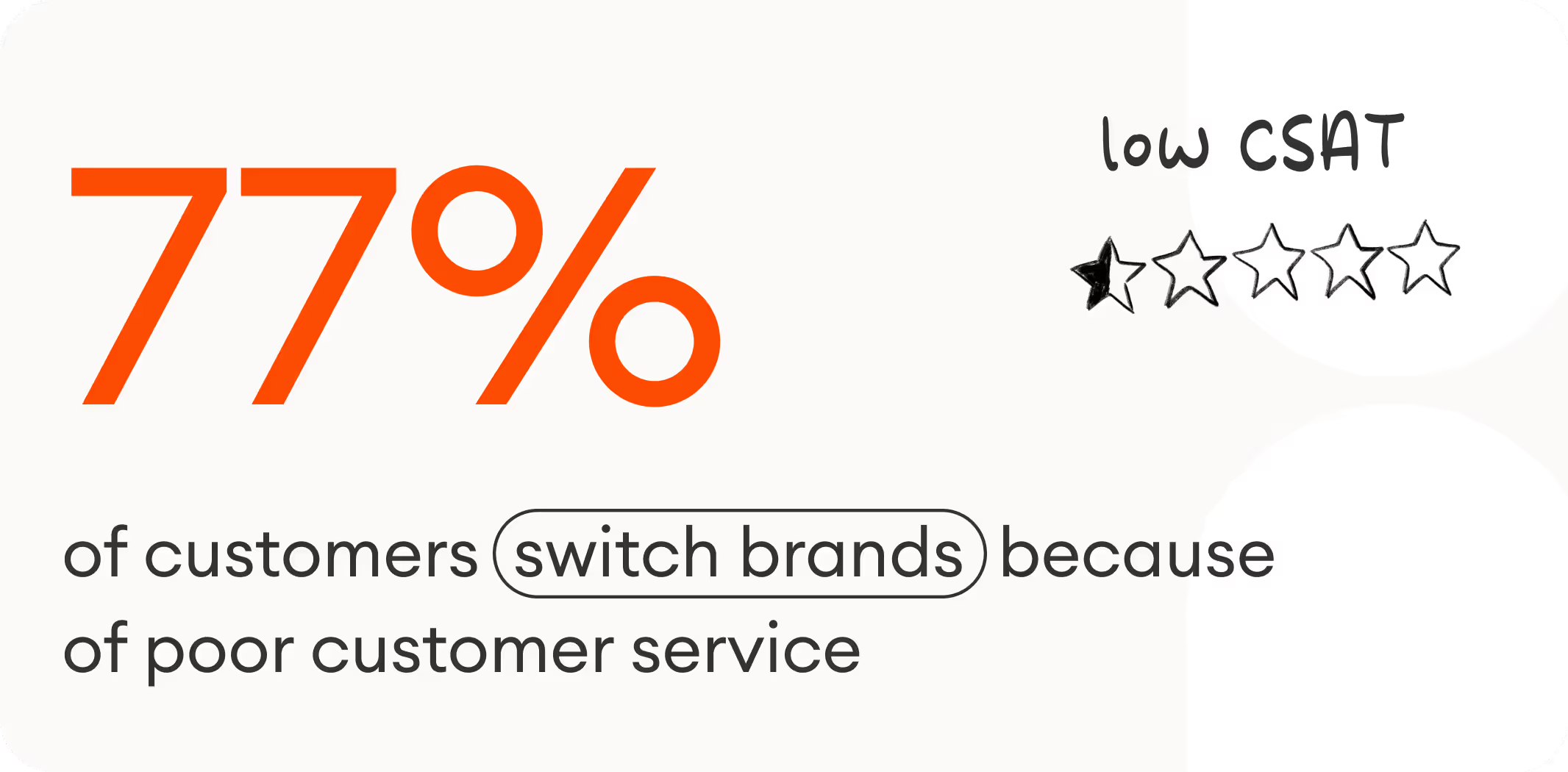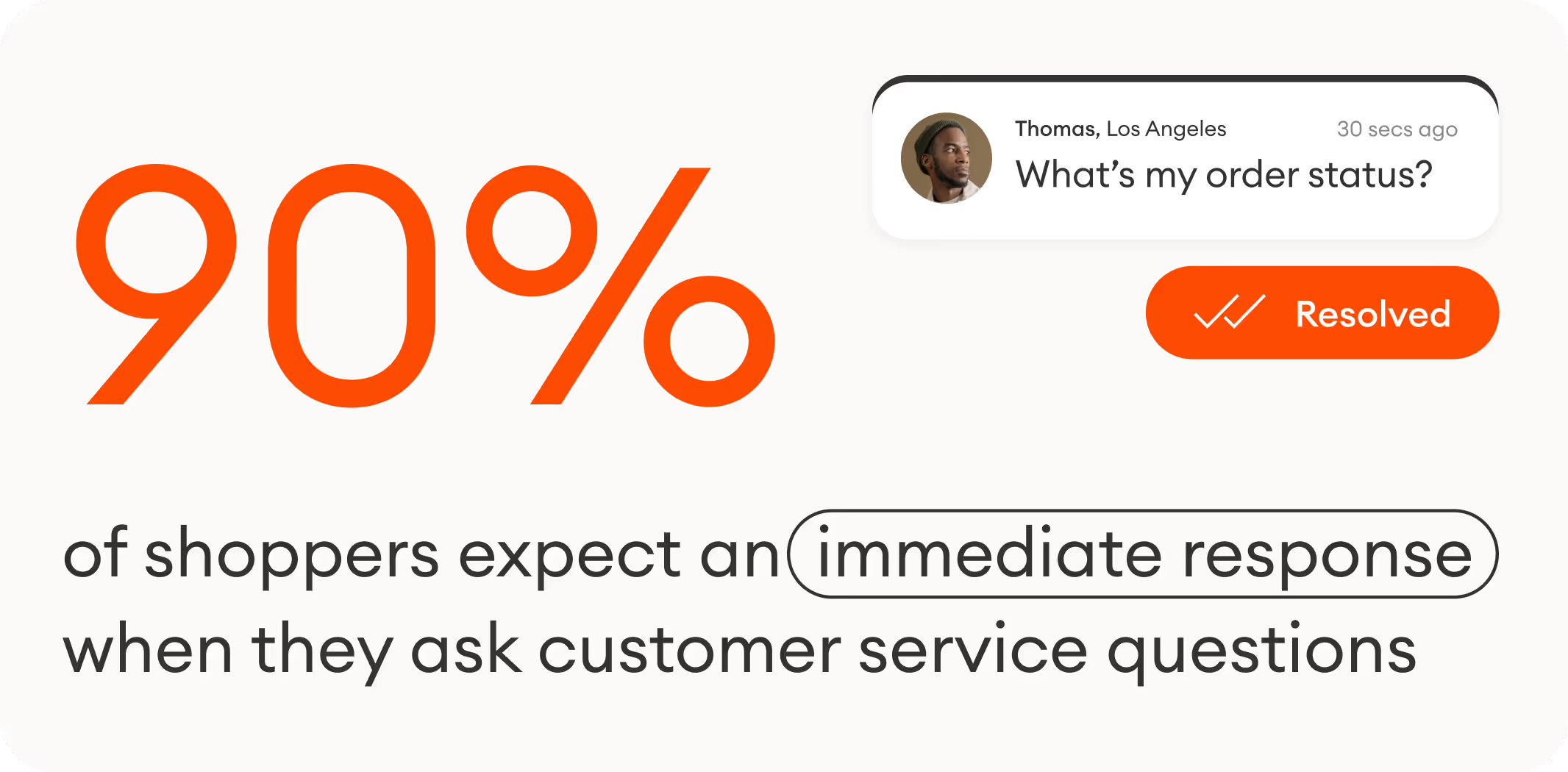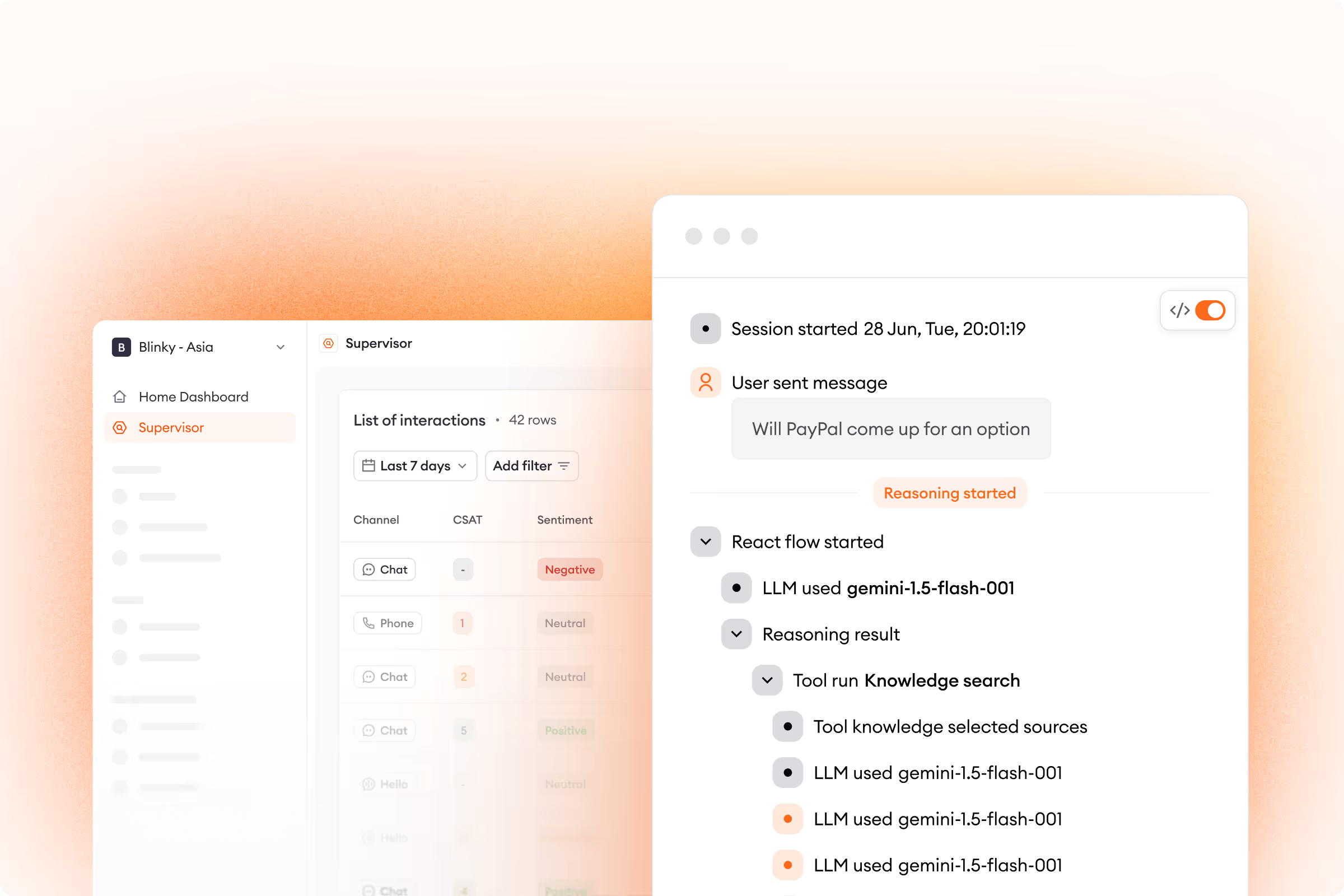Shopping online today is faster, easier, and more satisfying than ever before. As a result, ecommerce retail is booming.
By 2026, global ecommerce sales are expected to top $7 trillion. That same year, 24% of retail purchases — a record high — are projected to take place online.
As internet shopping gets more convenient, the ecommerce field will grow more crowded — and finding a way to stand out will become crucial.
To succeed in ecommerce, online brands can’t rely on brick-and-mortar strategies. And great products alone won’t cut it.
In an increasingly competitive space, the only way to delight customers and get them coming back to your online store is through exceptional ecommerce customer service.
Our guide answers the biggest questions surrounding ecommerce customer support and offers a list of actionable items to improve your overall customer service experience.
What is ecommerce customer service?
Ecommerce customer service is how online brands help customers handle any issues that come up while shopping, such as questions about payments, refunds, and delivery.
Why is ecommerce customer service important?
For starters, customers are demanding it — 88% of shoppers expect businesses to have an online self-service portal.

On top of that, customers aren’t buying products online just because of price or quality. 90% of shoppers see customer service as a major factor in their final buying decisions. In other words, your website’s entire customer experience impacts whether or not a purchase is made.
What is the role of customer service in an online store?
Compared to traditional retail, ecommerce customer service is particularly important because brands don’t have a chance to interact with customers face to face.
If a customer in a brick-and-mortar store has a negative experience, they have a choice: go through with their purchase anyway or physically leave the store and perhaps buy the product at a competitor’s location.
Online, leaving a website is much easier — all it takes is one click.
That’s why poor online customer support can severely harm a brand. 77% of customers switch brands because of subpar service interactions, and a further 78% cancel planned purchases after a negative experience.

In addition to this, ecommerce customer service plays the following roles for a company:
- Deliver positive experiences: Even without face-to-face interactions, online customer support has the power to craft pleasant customer experiences that spark delight. Through tools like a chatbot, ecommerce businesses can provide instant answers, 24/7 availability, and personalized product advice.
- Build relationships: Effective online service can forge meaningful relationships with your most valued customers. Automation software lets brands maintain a human touch by offering exclusive discounts, routing customers to their preferred agents, and proactively reaching out to high-value shoppers.
- Transform agents into product experts: Ecommerce customer support representatives can do much more than answer common questions. With the right technology, agents get their company’s full product catalog at their fingertips. Free from the fuss of having to hunt down specific info, support reps can quickly share product details with customers, leading to more conversions.
- Let customers act like brand ambassadors: Effective online service increases customer satisfaction, and it makes it easier for shoppers to share their positive experiences with others. Automated surveys that track CSAT scores, NPS scores, and general feedback let brands capture customer reviews and address their top concerns.
- Drive revenue: Ecommerce customer service tools turn your support into sales. Chatbots can recommend products that customers are more likely to buy and inform teams about a shopper's mood and buying intent to help them close more deals after handover.

To get your help desk to fulfill all of these roles, here are our 11 tips to achieving top-notch customer service.
11 tips to achieve outstanding ecommerce customer service
1. Make it easy for people to get in touch with you
For starters, you’ve got to make it clear to customers that you’re available to help them. How can they resolve their issues if they’re never able to reach you in the first place?
Identify what channels your customers are using — whether it’s chat, email, social media, or mobile — and make yourself available to them there.
AI-powered chatbots make this possible by syncing all of your support channels. You’ll be able to give immediate answers to more questions any time of day and get your most common questions fully resolved — taking up to 70% of customer queries off your plate.
Find out what must-have features to be on the lookout for when searching for a chatbot in our What Makes a Good Chatbot? blog post.
2. Create a central knowledge base
Storing your company’s knowledge base — your FAQs, how-to guides, and tutorials — in a single, accessible location is vital to ecommerce customer service success.
Your support agents — and automation tools — won’t be able to create great experiences if they can’t find answers to customer questions. Include your most important processes, product data, and other key elements to help reps become full-fledged specialists.
And keeping everything organized is paramount, so even in the most complex cases, your customer service team will know where to turn.
3. Reduce response times
No one likes long wait times — whether it’s at the airport, the doctor’s office, or in customer support.
90% of shoppers expect an immediate response when they ask customer service questions. While industry benchmarks are 24 hours for email and 5 minutes for phone, only chat allows for instant answers.

To bring response times down, consider these steps:
- Examine workflows: Are qualified agents getting support tickets in a timely manner, or do customers have to jump through a number of hoops to get to the right person? Implement common-sense workflows, so your team can start tackling customer problems without delay.
- See what your biggest questions are: Monitor your support tickets to see your shoppers’ top pain points. Have prebuilt answers in place for these queries so your agents don’t have to spend so much time on repetitive tasks.
- Embrace automation: AI-powered chatbots are transformational tools that can streamline your support team’s efficiency. Simplify workflows even more and automatically respond to your most common customer questions. Leading solutions can fully resolve up to 70% of your support tickets.

4. Meet customers where they are
Customers want to submit tickets on the channels they’re already using. If a shopper buys a product on your mobile app, they’ll likely seek out customer support there as well.
To ensure your team is available on your customers’ most preferred channels, you’ll need to take an omnichannel approach.
Omnichannel customer service is support given to customers that is seamlessly and consistently delivered across different devices, touchpoints, and communication channels.
Set up your ecommerce customer service over live chat, email, SMS — you name it — and make asking for support a hassle-free experience.
5. Make it personal
Your customers love it when you make them feel special. And there are plenty of ways you can go about doing this.
For shoppers who haven’t made a purchase yet, send emails with exclusive deals, like a birthday discount or membership in a loyalty program. After a customer has completed a purchase, follow up with them and check if they’re satisfied with their order.
Chatbots can deliver personalized interactions, too. By remembering a shopper’s personal details and shopping preferences, automation tools can craft human-like conversations. Leveraging AI can have additional benefits, such as gaining the ability to instantly modify text to sound more friendly or better fit your brand voice.
6. Set agents up for success
To help agents bring customers to the best ecommerce customer service possible, give them everything they need to make their job a breeze. Have crystal-clear procedures in place so each support rep knows what steps to take in every situation.
This will help them know issues as diverse as what cases need to be escalated and how repeat customers reconnect to the same agents.
A lot of this can be taken care of during the training process — and AI can help. AI platforms like Zowie Inbox guide agents through every resource in a company’s knowledge base to prepare agents to answer any question that comes their way. Zowie even walks support reps through complex cases step by step, helping them handle the biggest customer service headaches hassle-free.
7. Monitor and respond to your social media channels
Social media is a powerful avenue for customer service teams to build on positive experiences that customers share and make amends for any negative comments that shoppers choose to publish.
92% of customers will publicly call out brands after encountering poor customer service — and a lot of that will take place on social media. Ecommerce companies don’t just have to sit by and accept the loss.
At the very least, they can respond to customer concerns to show they’re listening. Going one step further, businesses can also use feedback from social media as the basis for any improvements that ought to be introduced.
Better still, support teams can add live chat to their social media pages — Messenger and Instagram are popular choices — to allow agents to talk to shoppers on platforms they’re already using. They’ll hopefully resolve issues right there on the spot and turn past frustration into customer satisfaction.
8. Offer self-service options
81% of customers prefer using a self-service option before contacting a customer service rep. Simplify support for your shoppers and let them enjoy the self-service options they’re clamoring for. This can be achieved in numerous ways:
- Providing answers to your most common queries on an FAQ page
- Preparing a series of articles addressing topics customers often need help with
- Creating a community forum where shoppers can ask for assistance
Better yet, enjoy the benefits of all of the above and add a chatbot to your website. The right solution can read your entire knowledge base to instantly resolve support tickets over chat without the need for agent involvement.
On the fence about chatbots? Separate fact from fiction in our blog post, Dispelling the Top 5 Myths Around AI-Powered Customer Service.
9. Collect and act on customer feedback
Ecommerce brands can transform their customer support by asking shoppers for feedback.
77% of customers have a more positive view of businesses that ask for and accept feedback, but most believe companies don’t do anything with this info. So collecting comments is one thing, but you’ve to act on them as well.
Chatbots help with this by automatically generating post-chat surveys after every customer exchange. Customers can tell you in their own words what worked well — and what didn’t.
How? AI features can condense each customer comment into a digestible recap that lets agents zero in on exactly what shoppers are requesting.
Then, chatbots can turn these reviews into actionable insights, so your team knows what steps to take next.
Collecting feedback lets brands develop real-time solutions by tapping into the voice of the customer (VOC), ensuring more online shoppers get the positive experiences they expect.
10. Be proactive
Customer support is traditionally seen as reactive — customers come to you with an issue, and agents respond with solutions. But to really elevate your ecommerce customer service, you can turn your team into a proactive powerhouse.
Don’t wait for customers to get in touch with you. Reach out and help them at critical points in the customer journey. Get them across the finish line with a discount code or offer product advice if they appear stuck between two items.
Proactive customer service can remove barriers that would otherwise frustrate customers. It helps shoppers get information fast and prevents small hiccups from becoming major headaches. With fewer escalations and considerable time savings, customer support teams can provide an enhanced experience that caters to your top customer demands.

11. Test, improve, and repeat
The most important thing to remember about customer service in ecommerce — success (or failure) is never permanent. Building a positive experience is an ongoing process, and improving customer support is something teams work on day in and day out.
To ensure you’re constantly improving, you need to test what works, see what your shoppers like, and make adjustments based on how things are going. And don’t panic — perfection should never be your goal. You’ll be surprised to see how far consistent, incremental upgrades can take you.
To make this feat a lighter lift, we recommend going with an automation solution. AI tools can track and analyze a host of customer support KPIs and highlight where your customer service is most effective. Moreover, they suggest where changes are most urgently needed to allow businesses to make better-informed decisions.
How to measure ecommerce customer service success
To set you on the right path, there are several key support metrics you should be tracking from day one. Here’s an overview of the most important ones:
- First contact resolution (FCR): FCR shows the percentage of customer requests that are resolved immediately after a customer’s first interaction with a brand. FCR increases as more customers get their issues handled after asking a single question. Higher FCR rates are closely linked to higher customer satisfaction.
- First response time (FRT): FRT is the time it takes a customer service agent to send a customer their initial reply. While online shoppers might not be actively measuring it, FRT is often the most important metric from the customer’s perspective.
- Customer satisfaction score (CSAT): CSAT shows how pleased shoppers are with your brand’s customer service. After interacting with an agent or chatbot, customers answer survey questions like How would you rate your experience? Customers typically select their level of satisfaction using a 1–5 scale.
- Repurchase rates: A brand’s repurchase rate highlights the percentage of its customers who have made at least two purchases in a given period. Essentially, it’s a way to check if your CX is attracting repeat shoppers.
- Upsell and cross-sell rates: Upselling is when agents convince customers to purchase a higher-priced version of a product. Cross-selling involves getting customers to buy a complementary product to one they’ve already selected.
Want more info into the biggest metrics in customer service you need to be tracking? Find it all in our blog post, Top 6 Customer Service Metrics You Should Measure.
Elevate your ecommerce customer service with AI-powered automation
Ecommerce customer service is about much more than answering questions.
Online retailers that offer a remarkable customer experience are the ones that really stand out. They attract more potential customers, build brand loyalty, and generate revenue from customer support.
While there’s no magic formula for making it all work, there is a proven recipe for success. And Zowie’s AI-powered automation can help you achieve each of our tips.
Zowie is the only customer service software built for ecommerce businesses that want to take their customer experience to a new level.

.avif)







